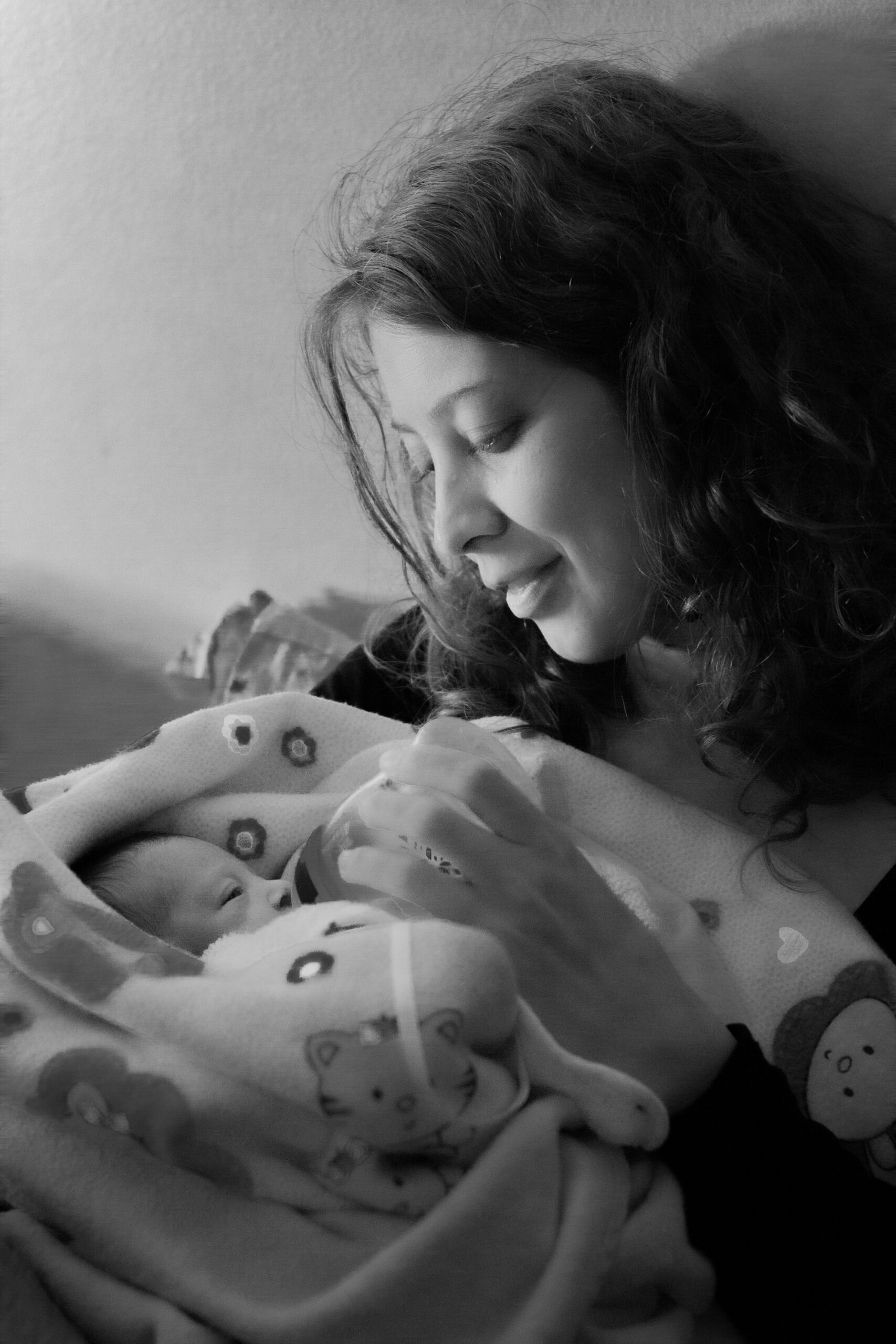Welcoming a newborn sparks so many emotions—immense joy, cautious hope, maybe a few anxious heartbeats. The postpartum journey—sometimes called the “fourth trimester”—often feels like one moment of relief closely followed by a thousand questions. How will your body bounce back? Why do emotions swing so wildly? Is this pain, this bleeding, this fatigue, within the range of “normal”? And how to distinguish harmless symptoms from those needing urgent attention? If these uncertainties circulate in your mind, you’re not alone in wondering what true recovery looks like. Understanding the phases of postpartum, recognizing common changes, knowing when to ask for help, navigating feeding dilemmas, and involving your partner or family—these threads interweave the fabric of thriving during this transformative chapter. Here’s a clear-eyed walkthrough on what unfolds after childbirth, practical solutions for comfort and healing, and scientifically-backed recommendations to guide you through the intricate emotions and challenges of new parenthood.
Understanding the Postpartum Phases
The postpartum period, classically the first 6–8 weeks after birth, is not only about healing wounds or the “return of periods” after pregnancy—it’s a time of rapid recalibration for body and mind. This interval splits into several nuanced stages that each present their own rhythm and needs:
- Immediate Postpartum (First 2 Hours): Those first moments post-delivery—be it vaginal birth or caesarean—require vigilant monitoring in the birth room. The risk for excessive bleeding (postpartum hemorrhage), erratic blood pressure, and other sudden complications is highest. Healthcare teams watch over uterine contractions, wound status, and even pain signals, ready to intervene if needed.
- Acute/Subacute Phase (First 6–12 Hours to 6 Weeks): This stage is the epicentre of physical healing. The uterus shrinks rapidly—a process known as uterine involution—and lochia (vaginal discharge) begins. Skin-to-skin contact, that first latch for breastfeeding, the reality check of mood dips or tearfulness—each event marks passage through this sensitive phase.
- Secondary/Delayed Phase (6 Weeks–6 Months or More): Even after routine checkups, a mother’s recovery continues—invisible and slow. Energy levels may rise and dip, pelvic floor may remain tender or weak, and emotional swings can prolong beyond what many expect.
Cultures across the world—from elaborate Indian rituals to quieter family-centred routines—emphasize rest, specific foods, and meaningful customs, all designed as silent scaffolding for the mother’s gradual restoration.
Physical Recovery: What’s Happening Inside?
Uterine Involution and Lochia—The Body Resets
Shortly after birth, your uterus embarks on an astonishing contraction marathon—shrinking from nearly one kilogram (just after birth) to its original, pear-like size within roughly a month and a half. Some women experience afterpains—often sharp cramps that intensify during breastfeeding (triggered by oxytocin surges). Simultaneously, lochia flows through several phases:
- Lochia rubra: Deep red, sometimes mixed with small clots, prominent in early days.
- Lochia serosa: Gradually fades to pink or brown, lighter, and less in volume.
- Lochia alba: Creamy or yellowish as healing nears completion—can persist for several weeks.
Heavy, foul-smelling, or persistent bleeding? Don’t shrug it off—these can hint at infection or retained tissue and warrant rapid medical review.
Breasts and Lactation—Nature’s Dynamic System
Shifts in hormone levels, particularly a steep drop in progesterone and estrogen, cue the rise of prolactin—the milk-producing superstar. Colostrum, the thick golden liquid secreted in the earliest postnatal days, is loaded with antibodies, effectively serving as a newborn’s first immunization. By day 3 or 4, mature milk follows—engorgement often sets in, and nipples might feel sore or tender.
What if the latch isn’t quite right, or milk seems slow to come in? Many parents find relief with gentle massaging before feeds, or by seeking expert guidance from a lactation consultant. Remember, exclusive feeding (breast milk) for the first 4–6 months is globally recommended—and plenty of solutions exist to overcome early obstacles.
Hair, Skin, and Hormonal Swings—The (Often Surprising) Aftermath
Noticing hair fall a couple of months after delivery? This isn’t just you—postpartum hair loss peaks between two and five months, directly tied to hormonal withdrawal. Night sweats, sudden hot flashes, and a gradual lightening of pregnancy-accentuated skin pigmentation may join the mix. Stretch marks? These may soften and fade, but often linger as gentle reminders of pregnancy’s journey.
Digestive Troubles and Pelvic Floor—Sorting Out the Discomforts
Constipation, hemorrhoids, and that odd pressure with laughing or sneezing? Many mothers face these, due to relaxed pelvic musculature and slow-moving bowels, especially when iron supplements come into play. Simple tweaks—hydration, high-fibre foods, and pelvic floor (Kegel) exercises—can accelerate recovery.
Healing after caesarean—where an abdominal wound layers through muscle and skin—requires extra patience. Redness, heat, or discharge at the scar? Don’t delay a checkup—early signs of infection respond best to prompt care.
The Emotional Landscape: Mood, Blues, and Beyond
The Baby Blues—Normal or Worrying?
Tears that appear without warning, fleeting worries, feeling “not quite yourself”? Almost 80% of mothers pass through the “baby blues,” lasting from the second day to about two weeks. This quick rollercoaster is tethered to shifting hormones and sleep deprivation. Support from family, community, and healthcare teams provides a vital buffer—think extra meals, a listening ear, or simply reassurance.
Postpartum Depression and Anxiety—Spotting When Support Is Needed
Sometimes emotional turbulence persists. Postpartum depression and anxiety present as persistent sadness, apathy, racing thoughts, disturbed sleep, or nagging fears about baby safety. These are not rare, nor a personal weakness—they are medical conditions with evidence-based treatments, ranging from talk therapy to safe medications.
And what about postpartum psychosis? Hallucinations, confusion, a sense of lost reality—these symptoms are very rare but shouldn’t be ignored. Immediate care is essential, and recovery rates are high with timely intervention.
Remember, partners too can face anxiety or depression, just as exhausted or overwhelmed. Mental well-being is a shared goal for the entire family.
Postpartum Complications: What Warrants Urgency?
Not every symptom is benign. Watch closely for:
- Sudden, heavy bleeding—blood clots larger than a rupee coin.
- High fever, shivers, or foul-smelling lochia.
- Persistent or worsening pain, chest discomfort, or shortness of breath.
- Signs of infection at caesarean or episiotomy wounds—redness, increase in swelling, pus.
- Intense sadness, withdrawal, or any thoughts of self-harm.
Chronic health conditions—diabetes, thyroid dysfunction, hypertension—deserve structured postpartum follow-up. New symptoms, from heart palpitations to unexplained mood swings, should be flagged for closer examination.
Supporting Recovery: Practical, Day-to-Day Tips
- Prioritize Rest: Sleep in short bursts, accept caregiving offers, and ignore guilt over unwashed dishes.
- Pain Relief: Take medications as prescribed, use cool packs, and keep incisions clean and dry.
- Gentle Movement: Walking boosts blood circulation—and gradual return to exercise prevents complications.
- Nourishment: Balanced meals and steady hydration are foundations for healing and, if breastfeeding, milk supply.
- Physical Self-Care: After-birth bleeding, wound healing, or pelvic floor discomfort may all benefit from simple, evidence-based remedies. Don’t hesitate to inquire about Kegel exercises or postnatal physiotherapy.
Feeding Your Baby: Choosing What Works
Breastfeeding isn’t always instinctive. Nipple pain, supply worries, or difficult latch can frustrate even the most patient parents. Regular feeding—every 2–3 hours—cushions against engorgement and supports steady growth. And if exclusively breastfeeding isn’t feasible? Formula feeding offers safe, adequate nutrition as long as preparation standards are maintained. Many households choose mixed feeding, combining both to suit infant needs and family circumstances. Track baby’s wet diapers and contentment for reassurance—output is a more reliable marker than scales in these early weeks.
Safe sleep should never be overlooked: always place your newborn on their back, on a secure surface, clear of pillows or soft objects.
Family Planning and Reconnecting As Partners
Did you know ovulation can return before visible periods? Fertility may resume as early as 6 weeks, earlier if not breastfeeding. Discuss family planning—progestin-only pills, IUDs, or condoms—with your provider. Wait ideally 6–18 months before the next pregnancy for optimal maternal and infant health.
Resuming intimacy? Wait until bleeding stops and comfort returns, typically after 4–6 weeks—but communicate openly about desires, discomforts, or concerns. Lubricants or targeted pelvic therapy can ease common problems like vaginal dryness.
Involving Partners and Family—Building a Support Network
The old proverb, “it takes a village,” is never more relevant. Partners who participate in newborn care, keep an eye on each other’s moods, and join medical visits foster resilience for everyone. Relatives and friends lighten everyday burdens—preparing meals, holding baby for a nap, or simply listening. It’s not about doing it all, but about doing what matters, together.
Managing Fatigue: Sleep and Survival Strategies
Sleep deprivation in postpartum is notorious. Micro-napping during baby’s rest times, delegating chores, and saying “yes” to community support reduces exhaustion. Share nighttime feeds with your partner (expressed milk, for example) when feasible to ensure at least some hours of uninterrupted sleep.
Nurturing the Newborn Bond
Research shows early skin-to-skin contact not only calms and comforts the infant but steadies breathing and temperatures, and even helps breastfeeding succeed. Gentle holding, eye contact, and soft-speaking or singing over days and weeks enhance the precious attachment between newborn and parent. Siblings or other family members—under supervision—also benefit from being woven into these early moments.
Regular Checkups: Medical Care After Birth
A first medical review should occur within 3 weeks, with a more comprehensive postnatal visit by 6–12 weeks. Physical healing, emotional status, family planning, immunisations, and feeding all weave into these checkups. Additional tests or ongoing disease management are tailored as per each mother’s recovery and medical history.
Special Considerations
- Mothers with twins, multiples, or higher needs: Greater fatigue, feeding complications, or emotional overwhelm may surface—these families profit from extra support or professional guidance.
- Pregnancy loss or grief: Dedicated support—counselling, freedom to grieve, and physical aftercare—matters profoundly here.
- Teens and older mothers: Younger or older women, and those with concurrent health issues, may gain from closer monitoring and extra caregiving resources.
- Preferences and traditions: Whether observing postnatal confinement or embracing modern approaches, the best recovery is the one that feels safe, supportive, and medically sound.
Everyday Life: Returning to Work, Restoring Normalcy
Resuming professional life, or simply daily routines, is another transition. Plan childcare in advance, discuss workplace arrangements if breastfeeding or expressing milk, and practise patience as your body, mind, and sense of self evolve. Community groups, trusted friends, and digital platforms provide encouragement—modern solutions meet ancient wisdom, all in service of parent and child well-being.
Key Takeaways
- The postpartum phase sows profound physical and psychological change—some predictable, others unexpected.
- Healing covers the body (from uterine involution to wound recovery), mind (from emotional swings to mental health support), and societal spheres (from family dynamics to policy benefits).
- Rest, nourishing foods, pain relief, and gentle activity help restore strength—there’s no one right timeline, only what works for you.
- Complications, from cardiac symptoms to infection, can be serious—seek expert help at the earliest warning sign.
- There’s wisdom in reaching for support; family, friends, healthcare teams, and peer groups all belong in your circle of care.
- For tailored information, health tracking, and more, download the application Heloa, the digital ally for parents seeking evidence-based advice and free health questionnaires for children.
Questions Parents Ask
What is postpartum psychosis and how can you recognise it?
Postpartum psychosis is a rare but very serious mental health disorder that tends to appear unexpectedly soon after childbirth. You might notice confusion, significant mood changes, hallucinations (such as seeing or hearing things nobody else does), or actions and ideas that seem quite out of character. If a parent begins to feel disconnected from reality, or their thoughts appear unusually illogical or frightening, immediate help from a mental health professional is vital. Treatments are highly effective, and recovery rates improve with early intervention.
How to support emotional adjustment after delivering a baby?
Emotional adaptation can feel like a storm of feelings—joy, fatigue, sometimes sadness or worry, all blending together. Gentle activities—such as a peaceful stroll in the fresh air, creative hobbies, or simple cuddle sessions with your newborn—can bring calm and comfort. Sharing your feelings with trusted friends or healthcare providers helps, too. Reaching out for emotional or practical support is always encouraged, especially when things feel overwhelming.
How long do postpartum symptoms such as bleeding and pain last?
The duration and intensity of postpartum symptoms vary. Vaginal discharge (lochia) generally trails off within a few weeks, shifting colour from bright red to pale brown or yellow. Discomfort or cramps tend to reduce over the first few days, but sensation can linger longer—more so if you had a caesarean. If bleeding grows heavier, pain becomes severe, or recovery doesn’t progress as expected, consult your healthcare provider promptly. Each journey is individual, and careful monitoring ensures the best outcomes.
Further reading:








